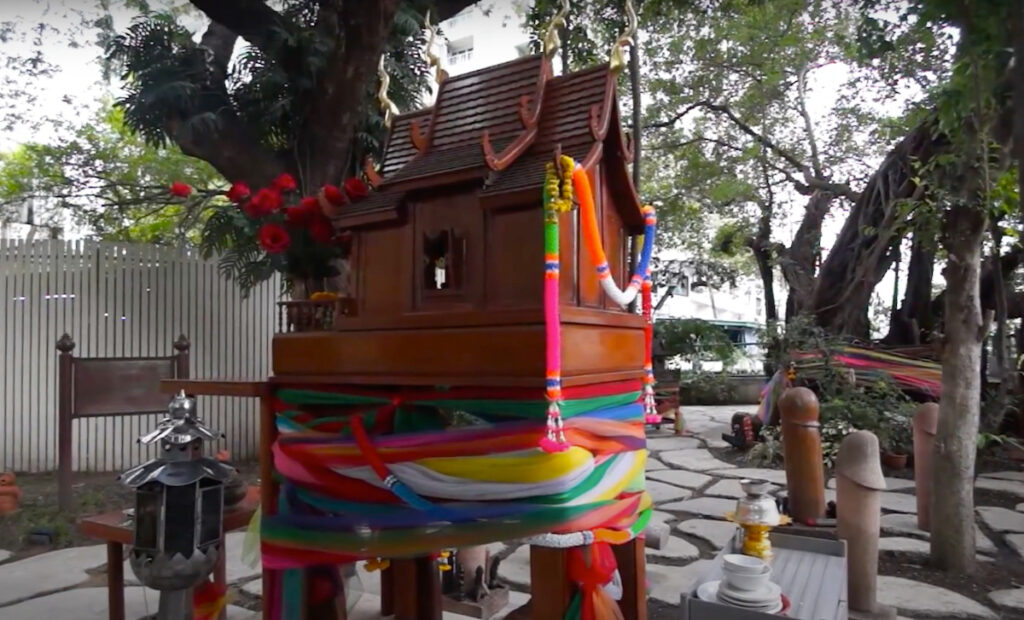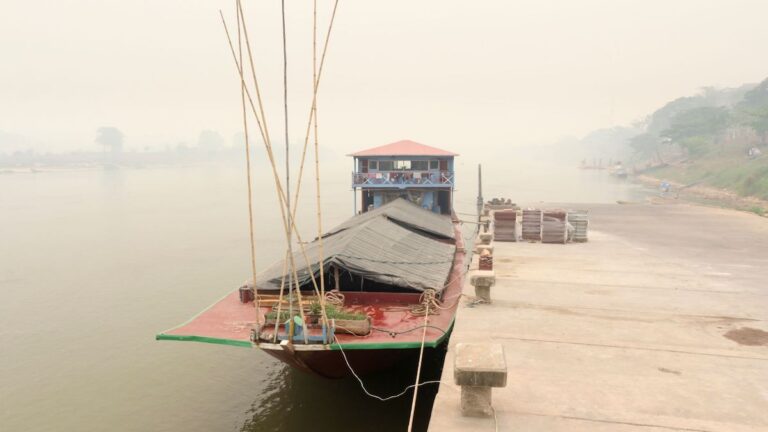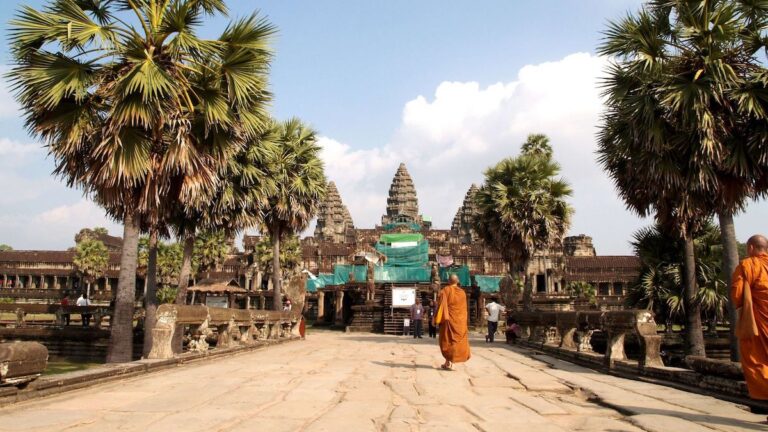Chao Mae Tuptim Shrine
Beneath its modern facade of sleek high-rise structures, high-tech advertising hoardings, and the Monorail gracing the skyline, Bangkok reveals a captivating secret. As visitors explore the vibrant streets of the Thai capital, they’ll soon uncover its hidden attractions, where local residents devoutly pray at ancient shrines, spirit houses, and temples adorned with an array of colorful decorations and auspicious charms.
One of the more unusual shrines is the one dedicated to the tree spirit named Chao Mae Tuptim. It is located in the gardens of the Swissotel Nai Lert Hotel in the central area of the city. The shrine is surrounded by hundreds of penis sculptures, some over three meters high, which have garlands, ribbons, and other ornamentation attached to them.
Significance of the Shrine
Many local residents believe that Chao Mae Tuptim is a fertility goddess. Women who are trying to conceive often visit this shrine and make merit with donations of lotus buds and aromatic jasmine garlands, as well as lighting incense sticks, in the hope that the mighty goddess will smile favorably on them and grant them a healthy child.

Even Thai women who do not believe in the legend surrounding Chao Mae Tuptim visit the shrine, after all, it cannot hurt to pay homage to an ancient tradition. Rumour has it that Chao Mae Tuptim is quite successful at helping ladies become pregnant. This fact seems to be borne out by the occasional female visitor, who is obviously carrying a child, returning to offer thanks in the form of another phallus for the collection.
Women often seek prayers for fertility, while men visit the Chao Mae Tuptim Shrine not only for the same reason but also because the phallus is regarded as a symbol of financial prosperity in Thai culture. So, if having a child is not your priority but financial success is, this shrine might still be fitting for your aspirations.
The phalluses around the shrine range from miniature wooden carvings to gigantic stone edifices. One or two of them have legs to ensure the luck becomes mobile and can travel. From a distance, the shrine looks like a typical Thai worship spot with vibrant colors and clouds of smoke from the burning incense.
As visitors draw closer to the tree-shaded spit house in the Nai Lert’s car park they catch sight of the unique penis collection. The pavilion housing the statues of the Chinese goddess and her acolytes is all but hidden by the stature of the phalluses.
The History of the Chao Mae Tuptim Fertility Shrine
The origins of the Chao Mae Tuptim shrine are shrouded in the mists of time, but older local people say that there was a small spirit house erected by a character known as Nai Lert here. They say it was put up to appease the spirits he believed dwelt in the tree at the site. As with all such shrines in Thailand, daily offerings that included incense, jasmine, food, and drink would have been placed at the front of it.
The shrine contrasts pleasantly with its surroundings as the five-star Nai Lert faces it and embassies including the UK are on nearby Wireless Road (Thanon Vittayu).
How to Get Here
Visitors, especially ladies wishing to improve their fertility and hopes of conceiving, can reach this rather unusual Bangkok site by taking the BTS Skytrain Sukhumvit Line and getting off at Chit Lom or Phloen Chit stations.
From the stations, it is a short walk north to the lush gardens that the Nai Lert Hotel is set in. As the route to the Chao Mae Tuptim Shrine is not particularly well signposted, it is adjacent to a canal (klong), and it is probably easier to ask for directions at the hotel’s reception desk.
Cultural Perspective on Spirit Houses and Phallic Symbols
In Thailand, spirit houses (known as san) can be found at almost every house and business. In houses with their own gardens, it is usually a small pavilion around 30cm² at its base perched on top of a pedestal and column. In shops, bars, and other commercial premises, the spirit house might be affixed high up on a wall.
There will usually be offerings of a glass of juice, a tiny morsel to eat, and incense sticks on the spirit house’s front altar to encourage the gods to look favorably on the day’s transactions. These are changed every day and ensure that the deities remain focused on providing good fortune to their patrons.
At first glance, visitors might form the opinion that the Chao Mae Tuptim shrine is unusual in a country where the people are polite and not given to showing sexual imagery in public palaces. A more careful look around will reveal that phallic charms and amulets are not as rare as people might think.
The smaller phallus charms are available at select market stalls in the capital, although tourists may have to look hard, and might be found by the cash register of a small shop, as the proprietor may believe it will improve business, or hanging from a car’s rear-view mirror.
The phallic charms are known as Shiva Leung in Thai and are believed to originate from Hindus’ belief in the god Shiva. Contemporary Buddhism derives much of its roots from India’s ancient Hinduism, a fact evidenced by the number of rituals, images, and symbols that the two religions have in common.






